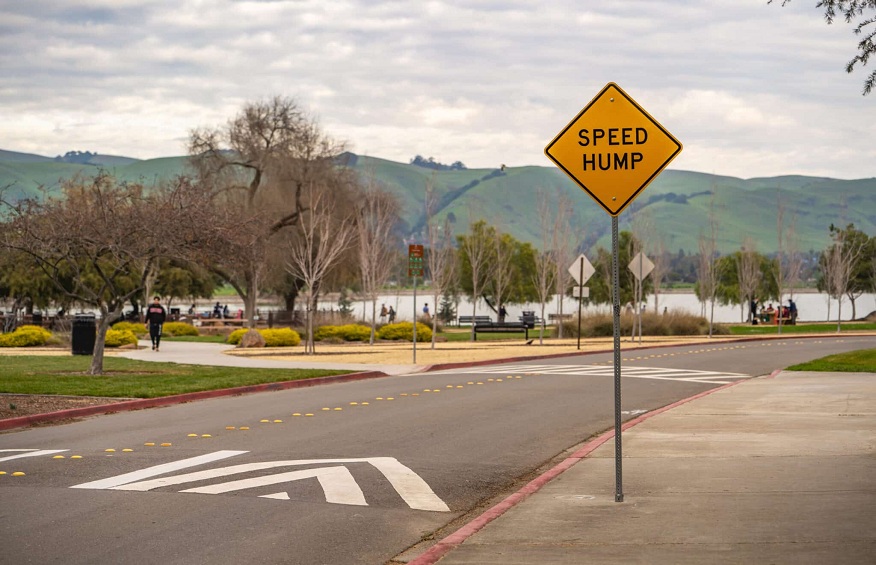Introduction
Speed humps have become a common sight on streets and roads in cities and neighborhoods, with the aim of reducing vehicle speeds and improving pedestrian safety. However, the effectiveness of these traffic calming devices greatly depends on their proper placement. In this article, we will explore the art and science behind speed hump placement, highlighting the various factors that need to be considered. We will also showcase real-world case studies and the use of traffic engineering principles and data analysis in determining the most effective locations for speed humps. Additionally, we will address common misconceptions about speed humps and emphasize the importance of community involvement in the decision-making process. Join us as we delve into the crucial aspect of creating safer streets through effective speed hump placement.
The Purpose and Benefits of Speed Humps
Speed humps, also known as speed bumps, are traffic calming devices that are designed to reduce vehicle speeds and improve pedestrian safety. These raised sections of pavement can be found in cities and neighborhoods all around the world, serving as an effective solution for controlling speed and traffic flow.
One of the main purposes of speed humps is to create a safer environment for all road users. By slowing down vehicles, they can reduce the likelihood of accidents and create a more pedestrian-friendly space. Speed humps can also discourage cut-through traffic, making residential areas safer and more peaceful.
In addition to promoting road safety, the use of speed humps can also lead to cost savings for cities and municipalities. By reducing vehicle speeds, speed humps can decrease wear and tear on roads, resulting in less maintenance and repair costs. Furthermore, their use can also eliminate the need for other safety measures, such as traffic signals or stop signs, which can be expensive to install and maintain.
The benefits of speed humps are clear, and their use has become increasingly popular in recent years. However, for them to be truly effective, proper placement is crucial. In the following sections, we will explore the art and science behind speed hump placement and how it can contribute to creating safer streets for all.
The Art of Speed Hump Placement
When it comes to speed hump placement, there is both an art and a science to consider. While the science aspect involves data and traffic engineering principles, the art lies in understanding the unique characteristics of each street and surrounding area. Factors such as street type, traffic volume, and speed limit must be carefully considered. Additionally, involving community members in the decision-making process is crucial to ensure the placement of speed humps addresses their specific needs. This not only promotes community engagement but also contributes to creating safer streets. Proper speed hump placement requires a balance between the science and art, making it a collaborative effort between city planners and the community. Together, they can create a more effective and efficient solution for reducing vehicle speeds and improving pedestrian safety.
The Science of Speed Hump Placement
The placement of speed humps is not just an art, but also a science. The use of traffic engineering principles and data analysis is crucial in determining the most effective locations for speed humps. By analyzing factors such as traffic volume, speed limit, and road type, city planners can determine where speed humps will have the greatest impact on reducing vehicle speeds and improving pedestrian safety. Ongoing data collection and analysis are also important in evaluating the effectiveness of speed humps and making adjustments as needed. With advancements in technology and research, the science behind speed hump placement continues to evolve, allowing for more accurate and efficient placement to create safer streets for all road users.
Community Involvement in Speed Hump Placement
Community involvement is a crucial aspect of effective speed hump placement. When community members are involved in the decision-making process, it ensures that the placement of speed humps is appropriate for the specific needs of the area. This not only promotes community engagement and ownership but also leads to better road safety outcomes.
Involving community members also allows for valuable input and feedback, which can help identify potential issues or concerns that may not have been considered by city planners. This collaborative approach can lead to a more successful and well-received speed hump placement project.
Furthermore, community involvement can also help with the implementation and maintenance of speed humps. Community members can assist in educating others about the purpose and benefits of speed humps, as well as keeping them informed about any changes or updates in the future.
Overall, community involvement is a crucial and valuable aspect of speed hump placement, promoting a sense of ownership and creating safer streets for all road users.
Case Studies of Successful Speed Hump Placement
There have been numerous successful speed hump placement projects in cities around the world, showcasing the art and science behind their effective placement. These case studies highlight the importance of considering various factors and involving the community in the decision-making process.
In Seattle, Washington, the implementation of speed humps on a residential street resulted in a 14% decrease in vehicle speeds and a 67% reduction in accidents. The community was involved in the planning and placement process, leading to a successful and well-received project.
In Chicago, Illinois, a study showed that speed humps reduced vehicle speeds by 10-15 mph on average, leading to a 40% decrease in crashes. This project also involved community input to determine the most effective locations for speed humps.
In Melbourne, Australia, a neighborhood saw a 40% decrease in crashes after speed humps were installed. The city worked closely with residents to determine the best placement for the speed humps, taking into account the high volume of pedestrians and cyclists in the area.
These case studies demonstrate the positive impact of properly placed speed humps on road safety for all users. They also highlight the importance of community involvement and the use of data analysis to determine the most effective locations for speed humps.
Debunking Common Misconceptions
Despite the proven effectiveness of speed humps in improving road safety, there are still some misconceptions surrounding their use. This section will address and debunk these common misconceptions to provide a clearer understanding of the benefits of speed humps.
Myth 1: Speed humps slow down emergency response times
- Contrary to popular belief, speed humps do not impede emergency response times.
- Emergency vehicles are equipped to navigate over speed humps and studies have shown that there is no significant delay in response times.
- In fact, speed humps can actually improve emergency response by reducing vehicle speeds and creating a safer environment for emergency vehicles to navigate through.
Myth 2: Speed humps are noisy and cause vehicle damage
- While speed humps may produce some noise and vibration, it is minimal and temporary.
- Properly designed and maintained speed humps should not cause any damage to vehicles.
- In fact, they can help reduce noise pollution and wear and tear on vehicles by encouraging slower speeds.
Myth 3: Speed humps are expensive and require constant maintenance
- While initial installation costs may be higher than traditional road safety measures, speed humps can result in long-term cost savings by reducing the need for frequent road repairs and maintenance.
- Properly designed and maintained speed humps should not require constant upkeep.
- Moreover, the cost of implementing speed humps is often less than the cost of accidents and injuries caused by speeding vehicles.
Conclusion: Debunking these common misconceptions showcases the many benefits of speed humps and their positive impact on road safety for all users. It is important to educate the public on the truth about speed humps and their role in creating safer streets.
Conclusion
In conclusion, proper placement of speed humps is crucial in creating safer streets for all road users. The art and science behind speed hump placement require careful consideration of various factors such as street type, traffic volume, and community input. By involving community members and utilizing traffic engineering principles and data analysis, cities can effectively implement speed humps to reduce vehicle speeds and improve pedestrian safety. Through case studies, we have seen how successful speed hump placement has resulted in safer streets and debunked common misconceptions. As technology and research continue to advance, we can expect even more effective and efficient speed hump placement in the future. It is essential for city planners and community members to work together in implementing speed humps to create safer streets for all road users. Let’s work towards creating a safer and more enjoyable driving and walking experience for everyone.



